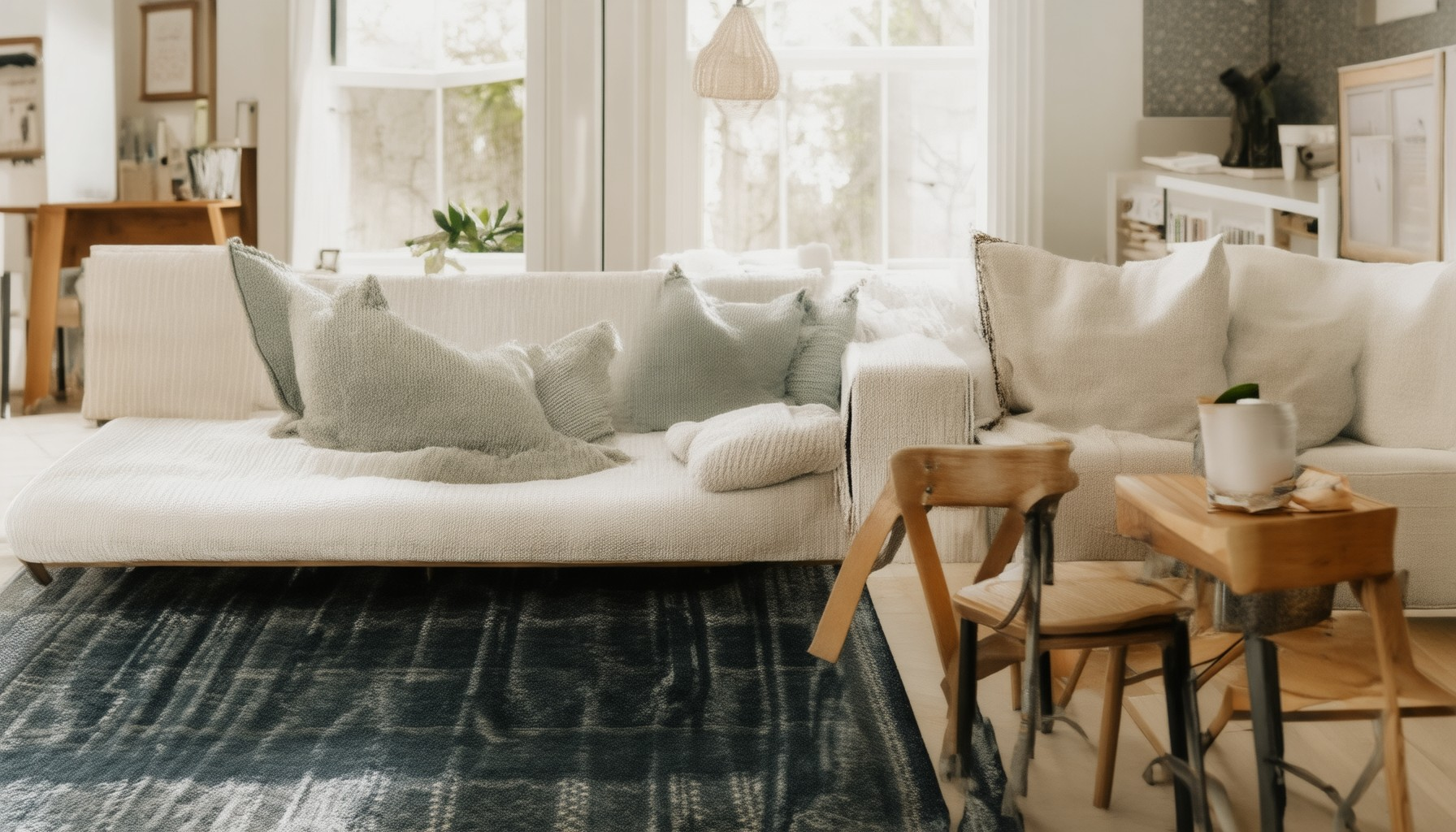Elevating your home on a small budget has never been easier—or more rewarding—thanks to the power of DIY projects. Whether you’re a homeowner looking to refresh your space or a renter aiming to personalize your living area, there’s no shortage of creative ways to make your home feel new without breaking the bank. From simple decor tweaks to major home transformations, this guide dives into the best small budget DIY ideas that deliver big results. Learn how to decorate a room on zero budget, fix up your home with minimal expense, and even tackle backyard makeovers with a modest investment. With the right tools and a bit of elbow grease, you’ll be amazed at how much your space can elevate—and how affordable it is to do so. Discover the secrets to unlocking your home’s potential with these budget-friendly DIY tips and projects that are both practical and inspiring.

Is DIY Really Worth It?
DIY, or Do-It-Yourself, offers a rewarding experience that combines creativity with practicality. Whether you’re tackling a small project around the house or diving into a larger-scale hobby, the decision to go DIY can lead to significant benefits that extend beyond the immediate task.
Pros of DIY
- Saves Money: Completing tasks yourself often costs less than hiring professionals. Many supplies can be sourced affordably, and the satisfaction of completing a project yourself can outweigh initial material costs.
- Personalization: DIY allows you to customize projects to match your style perfectly. Whether it’s painting a room or crafting a gift, the end result is uniquely yours.
- Skill Development: Engaging in DIY activities helps build practical skills that can be applied in various aspects of life. From basic tools usage to learning new techniques, these skills can be invaluable over time.
- Environmental Impact: Reducing waste by reusing materials and creating items from scratch contributes to a more sustainable lifestyle. DIY often involves repurposing items rather than discarding them.
- Budget-Friendly Learning Curve: Many DIY projects offer a cost-effective way to learn new skills. Tools and materials can often be acquired at a lower cost, making experimentation affordable.
When DIY Might Not Be the Best Option
While DIY has many advantages, it’s not always the most efficient approach. Here are a few scenarios where professional assistance might be warranted:
- Complex Projects: Tasks requiring advanced technical knowledge or specialized tools may be better left to experts to ensure safety and effectiveness.
- Time Constraints: If you’re short on time, certain projects may take longer to complete than expected, leading to frustration unless you’re committed to seeing it through.
- Maintenance and Repair: Professional-grade tools and expertise are often necessary for long-term fixes, especially in areas like plumbing or electrical work.
Getting Started with DIY
For those new to DIY, starting with simple projects is key. Begin with easy tasks like organizing your space, creating decorative items, or learning basic sewing techniques. Resources like DIY guides and tutorials can provide step-by-step instructions tailored to your skill level.
Conclusion
Ultimately, whether DIY is worth it depends on your goals and preferences. For many, the personal fulfillment and financial savings make it a worthwhile endeavor. Embrace the challenge, experiment with new techniques, and enjoy the process of bringing your creative visions to life. Happy DIY-ing!
How to Decorate a Room in Zero Budget?
Decorating a room on a tight budget doesn’t mean compromising on style. With a bit of creativity and resourcefulness, you can transform your space into a beautiful sanctuary without spending a dime.
- Furniture Arrangement: Reorganize what you already have. Move furniture around to create a fresh layout or add functionality to the space.
- Color Boost: Use paint to refresh walls or repaint old furniture. Light colors can make a room feel brighter and more spacious.
- Wall Art: Create your own wall art using materials like paper, fabric, or even cardboard. Frame family photos or designs you find online.
- D.I.Y. Decor: Turn everyday items into decorative pieces. For example, an old ladder can become a shelf, or a pallet can be transformed into a headboard.
- Lighting: Enhance the room’s ambiance with natural light during the day and use lamps or candles for soft lighting in the evening.
- Accessorize Wisely: Add personal touches with items you already own, like vintage finds or handmade crafts from friends or family members.
- Plants and Greenery: Incorporate low-maintenance plants to bring life and freshness into the room.
- Textile Touches: Use old sheets, towels, or curtains to create decorative throws, cushions, or window coverings.
Remember, the key to decorating on a budget is to maximize what you already have and get creative with the tools and resources at your disposal. With a little effort and imagination, your room can become a stunning reflection of your personal style.
For more tips and inspiration, explore DIY tutorials and creative project ideas on our platform. Happy decorating!
- DIY Tutorials
- Creative Ideas
- Decorating Resources

How to Fix Up Your Home on a Budget
Fixing up your home on a budget requires smart planning and prioritization. Here’s a step-by-step guide to making improvements without overspending:
1. Paint Your Walls
Repainting your walls can refresh the appearance of your home. Check if you have leftover paint or purchase affordable options from local hardware stores. Use a roller for large areas and brushes for details.
2. Declutter and Organize
Start by going through each room and getting rid of unnecessary items. Use free or inexpensive storage bins from thrift stores or online marketplaces to keep your space tidy and clutter-free.
3. Improve Lighting
Replace outdated light fixtures with affordable options from hardware stores or online platforms. Enhance lighting in dark corners by adding lamps or ensuring all switches are functioning properly.
4. Fix Small Wall Issues
Address cracks and peeling paint using DIY wall repair kits available at most hardware stores. These kits can help patch damage and prepare surfaces for repainting.
5. Rearrange Furniture
Reorganize your furniture to maximize space and improve flow. Move larger pieces against the walls to create more room. Add throw pillows or blankets for a cozy feel without spending much.
6. Deep Clean Your Home
Schedule a day to thoroughly clean each room. Gather your own cleaning supplies or hire a professional if needed, but saving money by doing it yourself can be rewarding.
7. Update Curtains and Blinds
Replace old curtains and blinds with new ones during sales or discounts. Look for affordable options online to refresh your home’s look without breaking the bank.
8. Enhance Yard Appearance
Trim overgrown plants, bushes, and trees. Rake leaves and apply mulch to improve your garden’s appearance. Use borrowed or cheap tools to manage this task efficiently.
9. Check for Leaks and Plumbing Issues
Inspect faucets, pipes, and fixtures for leaks. Replace worn-out parts with affordable alternatives from hardware stores or online shops to prevent water waste and ensure functionality.
10. Adjust Doors and Windows
Lubricate hinges and adjust thresholds to ensure smooth operation. Inspect windows for proper closure and fix any issues to enhance energy efficiency and security.
By focusing on these areas, you can transform your home into a more inviting and functional space without spending a fortune. Prioritize the most impactful changes first and enjoy the results of your efforts!

How Do You Level Up Your Home?
To elevate your living space, consider these strategic improvements that blend functionality with style:
- Curate Thoughtful Decor : Incorporate unique, meaningful items from local thrift stores or flea markets. These pieces add character and stories to your home, making it more inviting.
- DIY Projects : Explore creative DIY ideas on platforms like Pravylo Project to transform ordinary spaces into extraordinary ones. From custom art to refurbished furniture, these projects add personal touches.
- Upgrade Lighting : Replace outdated fixtures with energy-efficient, stylish options. Consider LED lights for ambiance and longevity.
- Declutter : Organize and minimize belongings to create a serene environment. A clean space feels larger and more comfortable.
- Add Greenery : Introduce plants or succulents to bring life indoors. Not only do they beautify, but they also purify the air.
- Enhance Textiles : Invest in high-quality bedding, curtains, and rugs. Soft textures contribute significantly to a cozy atmosphere.
- Update Hardware : Replace outdated door handles, knobs, and switches with modern alternatives. Even small details can make a big difference.
- Install Smart Home Features : Integrate smart lighting, thermostats, and security systems for convenience and efficiency.
- Renew Carpets or Floors : Refresh your floors with new carpets or a polished concrete finish to instantly update the space.
- Accessorize with Art : Add framed artwork or decorative tiles to walls, infusing color and personality into your home.
By thoughtfully enhancing your surroundings, you can create a space that reflects your style and fosters comfort and joy.
How to Level Up a House
To level up a house, consider the following comprehensive approach:
1. Assess the Problem
- Identify the cause of unevenness or instability in your house. Common issues include foundation settlement, sinkholes, or bowed walls.
2. Choose the Right Method
- Compaction Grouting : Ideal for minor settling issues. Inject grout beneath the foundation to compact and stabilize the soil.
- Steel Push Piers : Suitable for more severe foundation problems. These piers drive pilings deep into the ground to support and lift the house.
- Wall Anchors : Use for bowing or shifting walls. These devices secure the wall to prevent further movement.
- Carbon Fiber Repair : For extreme cases, carbon fiber strips can be injected into cracks to strengthen and stabilize the foundation.
3. Tools and Safety Tips
- Use heavy-duty equipment like vibratory rollers for compaction.
- Consult a professional for complex repairs to ensure structural integrity.
- Always wear safety gear when operating machinery.
4. Benefits and Considerations
- Proper leveling prevents costly damage to your home’s interior and infrastructure.
- Regular inspections can help catch issues early, saving money in the long run.
- Consider combining methods for maximum effectiveness, especially in severe cases.
By addressing the root causes and choosing the right solutions, you can effectively level and stabilize your house, ensuring longevity and safety.

How to Update an Old Home on a Budget
To refresh your home’s appearance without a major overhaul, consider these budget-friendly updates:
- Repaint Walls: A fresh coat of paint can transform a room. Opt for a neutral color palette to keep the space feeling clean and modern.
- Update Hardware: Replace outdated door handles, light switches, and faucet fixtures with newer, more streamlined options. Stainless steel or brushed nickel finishes can add a modern touch.
- Furniture Refresh: Introduce new pieces or breathe life into existing ones with a fresh coat of paint or upholstery. Consider thrifting for unique, budget-friendly finds.
- Rug Refresh: If carpeting is in good shape, a new rug can instantly update a room. For tile or wood floors, consider a bold area rug to add warmth and texture.
- Window Treatments: Add new curtains, blinds, or shades in a modern fabric to enhance the room’s aesthetic. Tiebacks or sheer panels can add a decorative touch.
- Lighting Updates: Install new lighting fixtures, such as pendant lights in the kitchen or a chandelier in the dining area, to elevate the space without a large investment.
- Energy-Efficient Appliances: Upgrade older appliances with energy-efficient models to save money and improve functionality. Check local sales or outlets for deals.
- Landscape Enhancements: Tidy up the yard or garden with new plants, mulch, or pathway pavers. Perennial plants or low-maintenance grasses can add curb appeal without costly landscaping.
- Declutter and Organize: Remove unnecessary items and organize spaces to create a cleaner, more inviting environment. Use storage boxes or shelves to streamline surfaces.
By focusing on these targeted updates, you can modernize your home while staying within a budget. Prioritize areas that offer the most visual impact for the least expense.





0 Comments